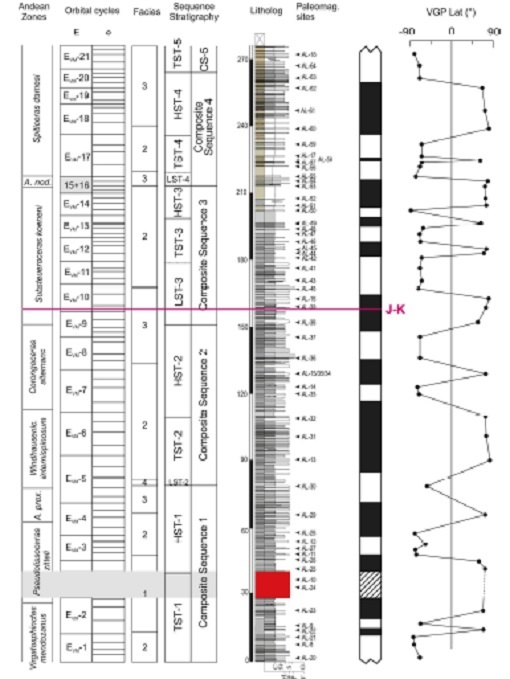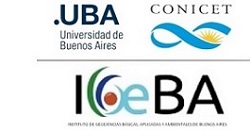The Jurassic-Cretaceous boundary controversy: its determination in the Neuquen Basin, Argentina using magnetostratigraphy and cyclostratigraphy
Autores:
M.P. Iglesia Llanos, D.A. Kietzmann
Año de la publicación:
2 017
Revista:
Latinmag Letters, Volume 7, Special Issue (2017), PM02, 1-5. Proceedings Juriquilla, Qro, Mexico 4
Resumen:
La posición del límite J-K es objeto de importante controversia a nivel mundial. Recientemente, se ha
establecido que las únicas herramientas que podrían ayudar a la determinación del mismo son microfósiles
(i.e. calpionélidos) y/o magnetoestratigrafía. El límite J-K está comprendido dentro de la Formación Vaca
Muerta que aflora en la Cuenca Neuquina, Argentina, y representa uno de los reservorios de hidrocarburos no
convencionales más importantes del mundo. La Formación Vaca Muerta contiene amonites y calpionélidos
entre los fósiles más importantes para su datación; de allí la relevancia de obtener una magnetoestratigrafía
confiable en esta unidad geológica. En la localidad Arroyo Loncoche, la Formación Vaca Muerta alcanza los
280 m de espesor y porta amonites de la Región Andina. Un total de 450 especímenes fueron recolectados
de 55 sitios paleomagnéticos, y se probó el origen primario de la magnetización aislada a través de varias
pruebas de campo. Las polaridades fueron datadas con amonites y de este modo se construyó una escala
magnetoestratigráfica que fue correlacionada con la Escala Internacional de Polaridades Geomagnéticas.
Así, se utilizaron dos herramientas cronoestratigráficas independientes como la cicloestratigrafía y la
magnetoestratigrafía para definir la posición del límite J-K. Esta posición del límite es consistente con los
estudios magnetoestratigráficos obtenidos en otras secciones de Cuenca Neuquina.
Palabras clave: Jurásico-Cretácico, magnetoestratigrafía, Cuenca Neuquina
Abstract:
The J-K boundary is controversial at a global scale. Recently, it has been proposed that the J-K could be
defined through microfossils (i.e. calpionellids) and/or magnetostratigraphy. The J-K boundary is comprised
within the Vaca Muerta Formation that crops out in the Neuquén basin, Argentina, and represents one of
the most important unconventional hydrocarbon reservoirs in the world. The Vaca Muerta Formation bears
ammonites and calpionellids among the most important fossils for dating purposes; therefore the importance
of obtaining a robust magnetostratigraphy in this unit. In the Arroyo Loncoche section, the Vaca Muerta
Formation is up to c.280 m-thick bearing ammonites from the Andean Region. 450 specimens were collected
from 55 paleomagnetic sites were analysed, and the primary origin of the isolated magnetization proved
through several field tests. Polarities were dated with ammonites and thus, a magnetostratigraphic scale
was constructed and correlated with the International Geomagnetic Polarity Time Scale. Two independent
chronostratigraphic tools such as cyclostratigraphy and magnetostratigraphy, were therefore used to
successfully define the position of the J-K. This position is consistent with the magnetostratigraphic scales
obtained in other sections of the Neuquén basin.
Keywords: Jurassic-Cretaceous, magnetostratigraphy, Neuquén Basin
Imagen:

